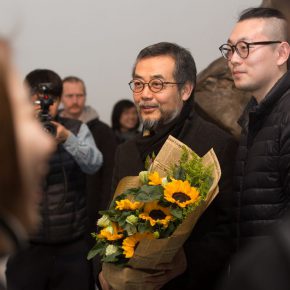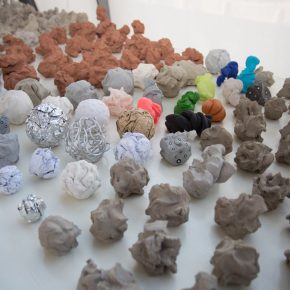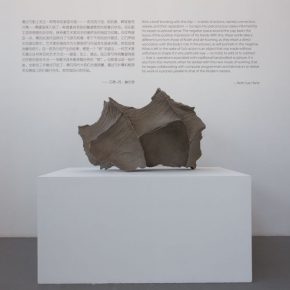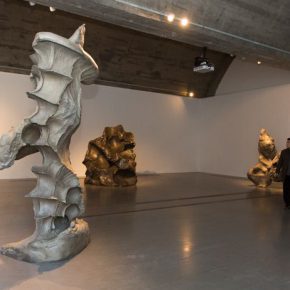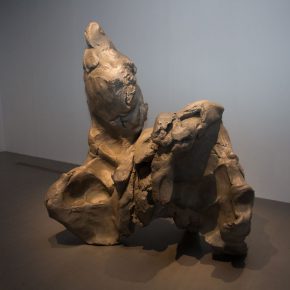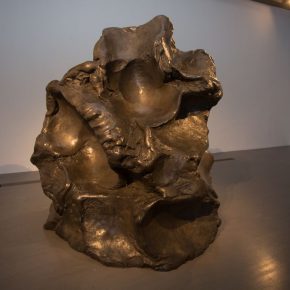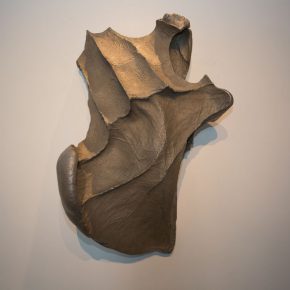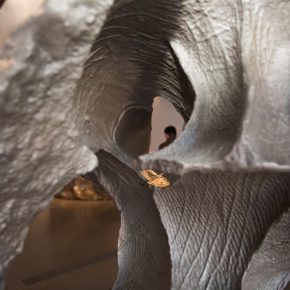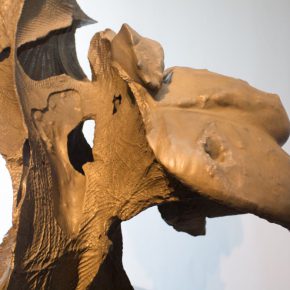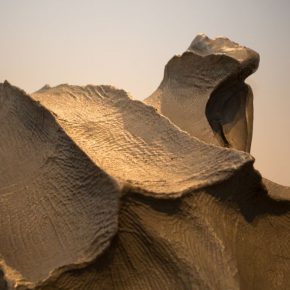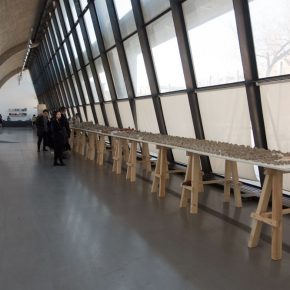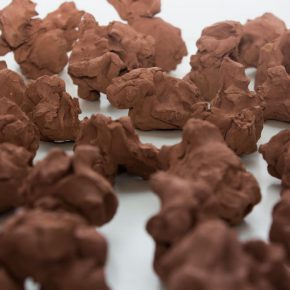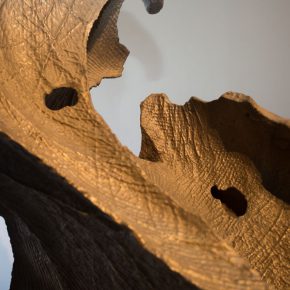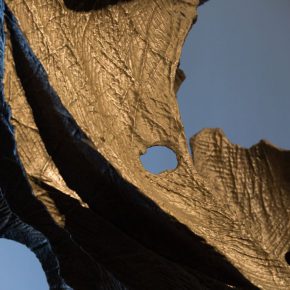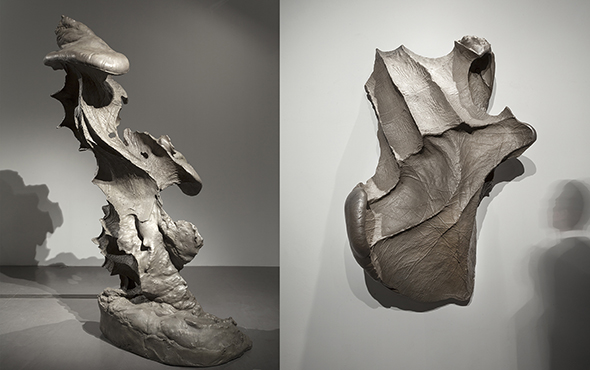
Sui Jianguo’s newest solo exhibition “Trace” opened at Pace Beijing on March 9, 2017. “Trace” is derived from the “incarnation (shape of law)” of Jesus from the Bible, but the artist places the “shape” before the “l(fā)aw”, on the one hand, it seems to be more in line with the traditional Chinese perception, and on the other hand, it echoes the main points considered by the creation of the exhibition, that is the internal relationship between the artist’s ontology and the sculpture itself.
In 2008, Sui Jianguo’s “Blind Portraits” series began to consider the object of the creation as the independent individual, for example, the clay in the hands of the sculptor is an independent individual, which is not the projection of a thing. Compared with the “Blind Portraits” series, the exhibited new work “Trace” series has advanced deeper in the detailed things such as the visual form and media and this evolution can be seen in three large castbronze sculptures in the exhibition hall.
Through the simple actions of the hands – grasping, fabricating, squeezing, separating and twisting, the artist’s hands directly and deeply come in contact?with the clay, it also synchronously screens the video work “Trace”, recording the moments, Betti-Sue Hertz called it “going deeply into the pre-consciousness that reveals a seasoned sculptural sense”. The fingerprints and marks remained on the surface of the clay seem to clarify the absence of the artist’s body (hands) and on the opposite, the various hollows and distortions presented by the clay, form the existence of the negative space of the “absent body”, which showcases the strong and undeniable sense of existence belonging to the body. The constantly “creating” hands of the video were projected on the exhibition wall, filling the space-time vacancies of the outside hollows for the sculpture, and both are blended into a complete site. The artist’s hands have a relationship with clay, and the soft nature of clay collides with the force of the hands, so that a sculpture is born. In the view of Sui Jianguo, the so-called sculpture is often the result of the interaction between hands and clay, while the essential core is located in “the first touch” – the first touch indicates the birth of “thing” with portraits the characteristics of life, it is like God touching the fingertip of Adam in Michelangelo’s Genesis.
In his early creations such as “Blind Portraits” series and other works, Sui Jianguo attempted to use the manual post-processing techniques to show the textural effect on the level of sculpture, but how to completely and comprehensively restore the stress moment of the hands “touching” clay has always been a pending issue for the artist. The artist used high definition 3D scanning and printing technology to capture and restore the contours of his hands on the surface of the artwork, making the surficial texture of sculpture become an unprecedented level of sophistication. “This breakthrough in precision is more than just technical. It draws closer to the artist’s aesthetic ideal — artworks generated through technology that record the properties and results of forces applied to a material with the precision?of scientific experiments, approaching the objective revelation of the corporeal nature of sculpture.” For the combination of technology, Sui Jianguo said, “It makes my body go deeper into the material.”
It can be said that since Sui Jianguo began the practice of “The Shape of Time” in 2006, his creative career has formed a clear dividing point – from the symbol of the times to the individual’s self-completion, which also started the practice of challenging the contemporary sculptural concept. The artist is able through a few new works to discuss the relationship between body and media to explore the new thought on concept, as Sui Jianguo said: “I rethink the core of sculpture art and try to restore it to a more fontal problem – the position of the body in time and space, as well as the way of feeling.”
Text by Lin Jiabin, Photo by Yang Yanyuan/CAFA ART INFO
Translated by Chen Peihua and edited by Sue/CAFA ART INFO


